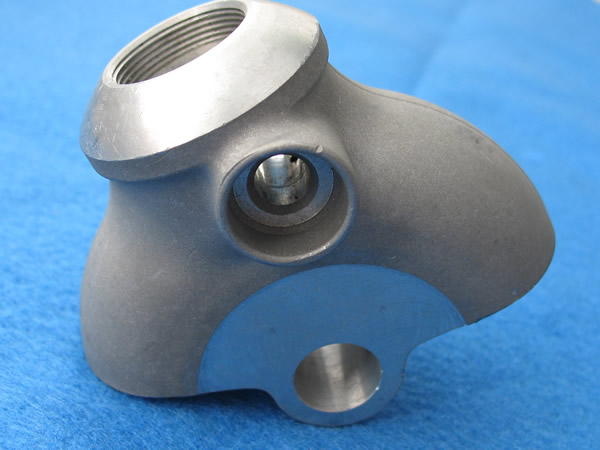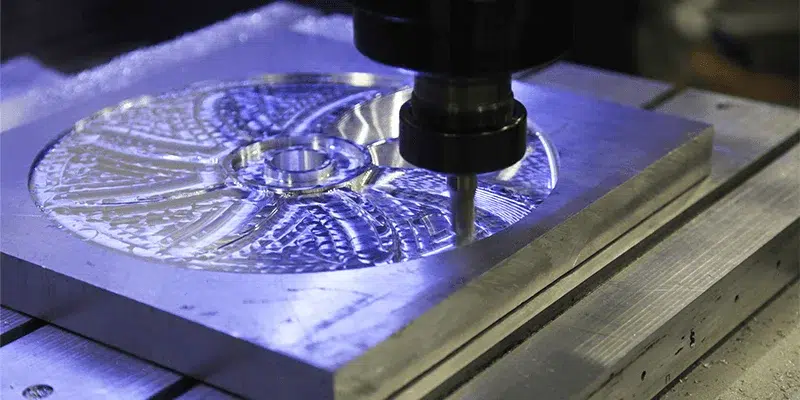10 expert tips for maintaining quality in Aluminum Casting production
Every little thing You Need to Understand About the Uses and Perks of Aluminum Castings
Aluminum castings play a vital duty throughout different industries, supplying distinct residential or commercial properties that enhance product efficiency. Their light-weight nature and toughness make them excellent for applications in auto and aerospace markets. In addition, the adaptability of casting methods permits for complex styles and tight tolerances. As the need for lasting solutions increases, recognizing the benefits and applications of aluminum castings comes to be significantly essential. What specific advantages do they offer over various other products?
Introduction of Aluminum Casting Processes
Aluminum casting processes encompass a selection of techniques used to shape molten aluminum right into preferred types. These approaches consist of sand spreading, die spreading, and investment casting, each offering distinct benefits depending upon the application (Aluminum Casting). Sand casting involves producing a mold from sand, enabling elaborate layouts and huge parts, while die casting makes use of high pressure to inject molten aluminum right into steel mold and mildews, guaranteeing precision and smooth coatings. Investment spreading, also known as lost-wax spreading, produces complicated forms with exceptional dimensional accuracy, making it appropriate for thorough components
These processes are characterized by their capability to create lightweight, long lasting components that exhibit outstanding rust resistance. The convenience of aluminum allows for customization in numerous sectors, from automotive to aerospace. Additionally, the ability to reuse aluminum improves the sustainability of these casting processes, minimizing ecological influence while maintaining product honesty. Understanding these techniques is crucial for optimizing production performance and attaining top quality aluminum castings.
Trick Applications of Aluminum Castings
Aluminum castings play a necessary duty across different sectors, especially in vehicle, aerospace, and customer electronic devices. In the automotive field, they add to lightweight structures that enhance gas efficiency. Similarly, aerospace components profit from aluminum's strength-to-weight proportion, while customer electronics utilize its convenience for efficient production.
Automotive Market Applications
As the auto industry continues to evolve, suppliers progressively rely on aluminum castings for their lightweight yet sturdy homes. These castings play an essential function in enhancing vehicle efficiency, gas efficiency, and total security. Trick applications include engine blocks, transmission housings, and structural parts, which take advantage of aluminum's outstanding strength-to-weight proportion. Furthermore, aluminum castings promote intricate geometries, permitting cutting-edge styles that enhance aerodynamics and reduce drag. The rust resistance of aluminum also adds to longevity, lowering maintenance prices for both producers and customers. As electric automobiles gain popularity, aluminum castings are essential for battery enclosures and various other components, better solidifying their relevance in the future of auto manufacturing.
Aerospace Part Manufacturing
In the aerospace market, aluminum castings are essential to the production of lightweight, high-performance parts. These castings are necessary for manufacturing parts such as engine housings, structural structures, and landing equipment elements, where weight decrease is crucial for gas efficiency and overall efficiency. The excellent strength-to-weight proportion of aluminum permits the development of complex geometries that improve the rules of aerodynamics. Additionally, aluminum's resistance to rust adds to the durability and dependability of aerospace parts, guaranteeing safety and security in trip procedures. The casting procedure likewise enables exact tolerances, which is very important in meeting rigorous aerospace sector standards. Generally, aluminum castings play a critical duty beforehand aerospace modern technology while supporting the sector's promote sustainable practices.
Consumer Electronic Devices Manufacturing
The usage of aluminum castings in consumer electronics production has become progressively substantial due to their lightweight and resilient residential properties. Suppliers leverage these castings to develop parts for numerous devices, including mobile phones, laptops, and pc gaming consoles. Aluminum's exceptional thermal conductivity additionally helps in warmth dissipation, enhancing tool performance and long life. The versatility of aluminum allows for intricate designs and intricate geometries, allowing smooth and contemporary looks that appeal to consumers. Additionally, aluminum castings can be conveniently reused, lining up with the growing demand for sustainable manufacturing techniques. As innovation breakthroughs, the function of aluminum castings in establishing innovative and efficient customer electronics is anticipated to expand, making them a staple in the industry.

Benefits of Making Use Of Aluminum Castings
While numerous materials are readily available for spreading, aluminum attracts attention due to its unique mix of lightweight homes, toughness, and rust resistance. The reduced thickness of aluminum makes it an optimal option for applications where weight decrease is critical, such as in the automobile and aerospace sectors. Its superb strength-to-weight ratio permits producers to produce resilient elements without adding excessive weight.
Furthermore, aluminum castings can be generated with detailed designs and tight resistances, enabling intricate geometries that are hard to accomplish with other materials. The adaptability of aluminum enables various casting methods, including sand, pass away, and investment casting, satisfying diverse production requirements. Furthermore, aluminum's ease of machining and completing improves its charm, helping with the development of top quality surface finishes. Overall, the advantages More Help of using aluminum castings contribute to boosted efficiency and effectiveness in various applications throughout various markets.
Rust Resistance in Aluminum Castings

All-natural Oxide Layer
A natural oxide layer forms on the surface area of aluminum castings, offering an important obstacle versus environmental variables that can cause damage. This slim, protective movie is an outcome of the aluminum's reaction with oxygen airborne, efficiently securing the underlying metal from wetness, chemicals, and pollutants. Because of this, aluminum castings exhibit outstanding deterioration resistance, which boosts their durability and longevity in various applications. The oxide layer is not only beneficial for security however also adds to aesthetic top qualities, as it can develop a matte coating that many sectors find attractive. Additionally, this all-natural process decreases the requirement for added layers, making aluminum castings an economical selection for makers looking for reliable, lasting materials.
Alloy Variations Effect
The make-up of aluminum alloys greatly affects their deterioration resistance buildings in castings. Different alloy variants, such as 1xxx, 2xxx, and 6xxx collection, display unique degrees of susceptibility to rust. 1xxx alloys, largely composed of pure aluminum, offer excellent rust resistance due to their high pureness. In contrast, 2xxx alloys, which consist of copper, might experience considerable rust when revealed to severe environments. 6xxx alloys, including magnesium and silicon, strike an equilibrium between strength and resistance. The existence of alloying components can boost or diminish protective oxide layers, ultimately impacting long life and efficiency. Recognizing these additional resources variants is crucial for selecting the best alloy for particular applications where corrosion resistance is crucial.
Design Adaptability and Customization
Although various materials exist for casting applications, aluminum stands out as a result of its remarkable design flexibility and possibility for customization. This adaptability permits designers and engineers to produce complex shapes and kinds that meet particular useful requirements. Aluminum Casting. The reduced density of aluminum makes it possible for lightweight layouts, which is especially valuable in markets such as auto and aerospace, where weight reduction is essential
Aluminum castings can be customized to different requirements, consisting of wall thickness, surface coating, and dimensional tolerances. This versatility not just improves the visual allure yet additionally enhances the efficiency of the end product. Additionally, progressed techniques such as 3D printing and computer-aided layout (CAD) further assist in the customization procedure, making it possible for rapid prototyping and reducing preparations. Aluminum castings can effectively meet the diverse needs of various industries while using makers the ability to innovate and respond promptly to market demands.
Comparison With Various Other Casting Products
While various casting materials each have their special benefits, aluminum regularly demonstrates premium homes that make it a favored selection in numerous applications. Compared to iron and steel, aluminum is substantially lighter, which minimizes the overall weight of ended up products, enhancing fuel performance in auto and aerospace sectors. Aluminum uses excellent corrosion resistance, calling for much less upkeep over time compared to materials like iron, which can corrosion.
When juxtaposed with plastics, aluminum's strength and resilience exceed several synthetic options, making it appropriate for demanding settings. Furthermore, aluminum's thermal and electrical conductivity is extremely greater than most other metals, making it perfect for applications requiring reliable warmth dissipation or electrical elements.

Future Fads in Aluminum Casting Innovation
Advancements in aluminum casting innovation are set to redefine its applications across various markets. Innovations in automation and robotics are simplifying production processes, improving efficiency and precision. The integration of expert system and device discovering makes it possible for real-time monitoring and predictive maintenance, reducing downtime and improving quality assurance.
Furthermore, the growth of innovative alloys is increasing the efficiency capabilities of aluminum castings, making them suitable for more requiring applications, especially in auto and aerospace fields. Sustainable methods are additionally getting traction, with raised focus on recycling aluminum and minimizing carbon important link footprints during production.
Additive manufacturing techniques, such as 3D printing, are being discovered to create complex geometries that conventional techniques can not accomplish, enabling better layout versatility. These trends show a future where aluminum casting will certainly not just fulfill however go beyond market expectations, driving technology and sustainability in manufacturing.
Frequently Asked Inquiries
Exactly How Are Aluminum Castings Recycled After Use?
Aluminum castings are commonly collected, cleaned, and refined in recycling centers. The material is thawed down, refined, and after that reformed right into brand-new products, therefore saving sources and decreasing environmental effect while preserving aluminum's preferable homes.
What Are the Common Costs Related To Aluminum Castings?
The typical costs related to aluminum castings vary based upon variables such as complexity, volume, and material requirements. Typically, rates vary from a couple of bucks per pound to considerably greater amounts for intricate designs and big quantities.
Just How Do Aluminum Castings Compare in Weight to Steel Castings?
Aluminum castings weigh considerably much less than steel castings, normally around one-third the weight (Aluminum Casting). This reduced mass permits easier handling, transportation, and application in various sectors, adding to boosted efficiency in design and manufacturing processes
What Industries Primarily Count On Aluminum Castings?
Various markets significantly count on aluminum castings, consisting of automobile, aerospace, electronic devices, and consumer products. Their lightweight nature, corrosion resistance, and adaptability make them necessary for manufacturing parts in these fields, improving performance and performance.
Exist Any Health And Wellness Dangers Connected With Aluminum Casting Processes?
Health and wellness dangers related to aluminum casting procedures consist of direct exposure to fumes, dust, and chemicals, which can cause respiratory problems and skin irritability. Correct safety steps and tools are vital to minimize these potential risks in the office.